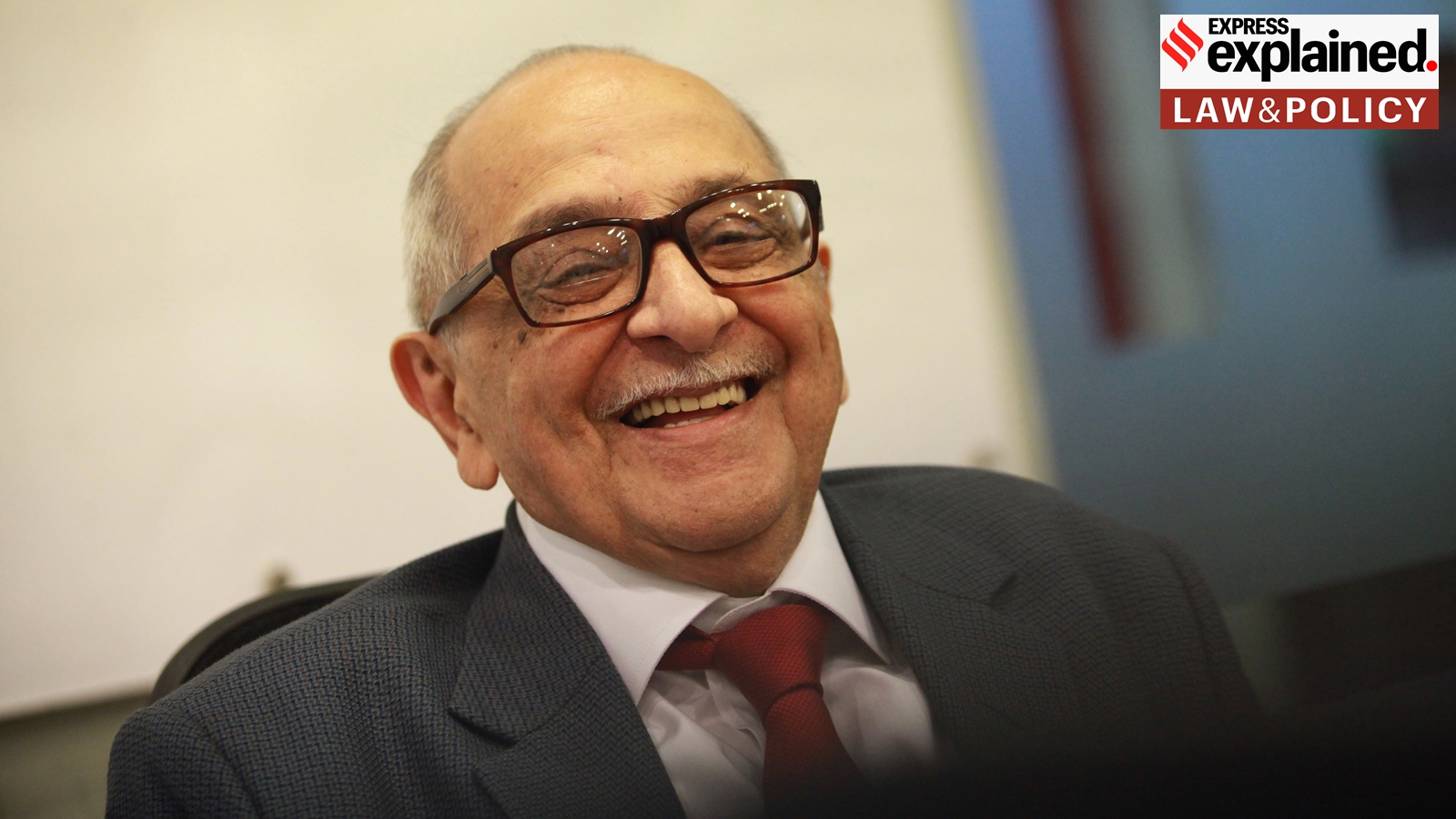Eminent jurist and Senior Advocate Fali S Nariman passed away in the early hours of February 21 at the age of 95. His career as a lawyer spanned over 75 years with the last half-century being spent as a senior advocate of the Supreme Court of India. During this time, he left an imprint on the law and the legal profession in a vast array of landmark cases.
1. The Second Judges Case: Supreme Court Advocates-on-Record Association v. Union of India
In 1981, a five-judge constitution bench of the Supreme Court gave the central government the final say in matters regarding judicial appointments and transfers by allowing the President to refuse recommendations made by the Chief Justice of India (CJI). The court held that the requirement under Article 124 of the Constitution, stating that the CJI must be “consulted”, means that there must be an exchange of views, and there is no necessity for “concurrence” between the CJI and the President.
The Supreme Court Advocates-on-Record Association (SCAORA) challenged this decision in 1987 and was represented by Senior Advocate Fali Nariman among a host of other senior lawyers. Nariman argued that “consultation” in the context of judicial appointments means more than merely seeking advice.
He stated that the advice given through consultation with the CJI must be seen as binding in order to protect the independence of the judiciary, as judges would be in a better position to determine the suitability and competence of candidates.

In 1993, the nine-judge bench agreed with Nariman’s arguments and established the Supreme Court Collegium. It’s a body comprising the senior most Supreme Court judges which is tasked with making binding recommendations for appointment of judges to the apex court and High Courts. This method of appointment has remained in place since this decision.
2. The Third Judges Case: In re: Special Reference 1
The President of India K R Narayanan exercised his power under Article 143 of the Constitution to send a “reference” to the Supreme Court for the latter’s opinion on questions of law that may have public importance, and asked for clarification on the procedure for appointment of judges following the second judges case.
Nariman made submissions to assist the court in this case. The court, answering the reference in 1998, clarified that the CJI must consult other judges of the Supreme Court before making any recommendations for judicial appointments. Further, it expanded the size of the Supreme Court Collegium to five senior most judges from the existing three.
3. National Judicial Appointments Commission case: Supreme Court Advocates-on-Record Association v. Union of India
Nariman would also appear in the latest chapter of the judge appointments dispute following the challenge to the National Judicial Appointment Commission Act, 2014 (NJAC). The NJAC amended the Constitution to insert Article 124A which created a six-person commission for judicial appointments. This commission would comprise the CJI, two other senior SC Judges, the Union Minister of Law and Justice, and two “eminent persons” who would be nominated by a committee comprising the CJI, Prime Minister and Leader of Opposition.
Nariman represented the SCAORA in the case and argued that the NJAC would impinge upon the independence of the judiciary if the central government and the legislature were allowed to participate in the selection and appointment of judges. Four of the five judges on the bench agreed with this view in 2015 and struck down the NJAC, in effect reinstating the collegium system for judge appointments.
4. Parliament cannot curtail fundamental rights: I.C. Golak Nath v. State of Punjab
Two brothers in Punjab challenged the Constitution (Seventeenth) Amendment Act, 1964 as it amended Article 31A of the constitution. This article deals with the acquisition of estates and can be found in the fundamental rights chapter of the constitution.
Fali Nariman appeared on behalf of the intervenors in this case who supported the petitioners. They argued that Parliament’s power to amend the constitution under Article 368 did not include articles contained in Part III of the Constitution dealing with fundamental rights. A majority of six judges from the eleven-judge bench agreed with the petitioner’s submissions in 1967, pointing out that Article 13(2) states that Parliament cannot make a law which infringe fundamental rights.
5. Bhopal gas tragedy: Union Carbide Corporation v. Union of India (1989)
In 1984, the Bhopal gas tragedy where 42 tons of toxic chemicals leaked from a pesticide plant owned by Union Carbide India Limited, resulting in thousands of deaths and environmental damage in the following years. The Supreme Court began hearing the case for compensation to the victims in 1988.
Senior Advocate Nariman appeared, representing Union Carbide, and offered to pay a sum of 426 million dollars as compensation to the victims of the tragedy. In 1989, Union Carbide reached a settlement with the central government and agreed to pay 470 million dollars as compensation.
6. Rights of minorities to establish and administer education institutions: TMA Pai Foundation v. State of Karnataka
Nariman argued in the landmark TMA Pai case in support of minority rights to establish and administer educational institutions under Article 30(1) of the Constitution. The court held that linguistic and religious minorities have to be determined on a state-by-state basis and that the government has the power to frame regulations which will apply to minority-run educational institutions. However, the court clarified that these regulations cannot “destroy the minority character of the institution or make the right to establish and administer a mere illusion”.
7. Governor to act only upon the aid and advice of the council of ministers, chief minister: Nabam Rebia, and Bamang Felix v. Deputy Speaker
The Supreme Court in 2016 was tasked with navigating the political crisis in Arunachal Pradesh following the rebellion of 21 Congress MLAs in 2015. Governor Jyoti Prasad Rajkhowa advanced the assembly session so that a floor test could be conducted to determine which party held the majority.
Nariman, on behalf of the house whip Bamang Felix, argued that the governor did not have the power to advance the assembly session as this could only be done upon the aid and advice of the council of ministers and the chief minister, as per the constitution. The court agreed and restored the Congress government, led by chief minister Nabam Tuki.
8. Obtaining bail for former Tamil Nadu Chief Minister Jayalalitha: J. Jayalalithaa v. State of Tamil Nadu
Former Chief Minister Jayalalitha had been accused of misappropriating funds during her tenure between 1991 and 1995. A Sessions Court in Bangalore in September 2014 found that she had acquired property disproportionate to her known income and imposed a Rs 100 crore fine on her. This sentence was upheld by the Karnataka High Court a month later leading to appeal at the Supreme Court.
Nariman appeared on behalf of Jayalalitha in October 2014 and convinced the court to grant bail against executing the fine and suspend the sentence passed by the Sessions judge in Bangalore.
9. Cauvery Water Dispute: State of Karnataka v State of Tamil Nadu
Nariman represented Karnataka for over 30 years in the water-sharing dispute with Tamil Nadu. In 2016, the Supreme Court ordered the Karnataka government to release 6,000 cusecs (cubic feet per second) of water from September 21 to September 27.
The Karnataka legislative assembly, however, passed a resolution stating that they did not have water to spare and chose to defy the courts orders. Due to this non-compliance, Nariman refused to argue the case on behalf of the Karnataka government any further.
In the final judgment passed on February 16, 2018, the court took note of Narimans stand on the issue and observed “We think it necessary to state here that Mr. Nariman had courageously lived upto the highest tradition of the Bar”. The court then proceeded to reduce Karnataka’s annual water releases to 177.25 thousand million cubic feet (TMC) from 192 TMC.
Indira Jaising writes: Indian law, after Fali S Nariman

Ananya Das is your guide to the latest trends, viral sensations, and internet phenomena. Based on a keen understanding of digital culture, Sophie navigates the ever-evolving landscape of trending topics. With an insightful and engaging approach, she explores what’s buzzing across social media platforms, ensuring readers stay in the loop with the most talked-about and shareable content online.


